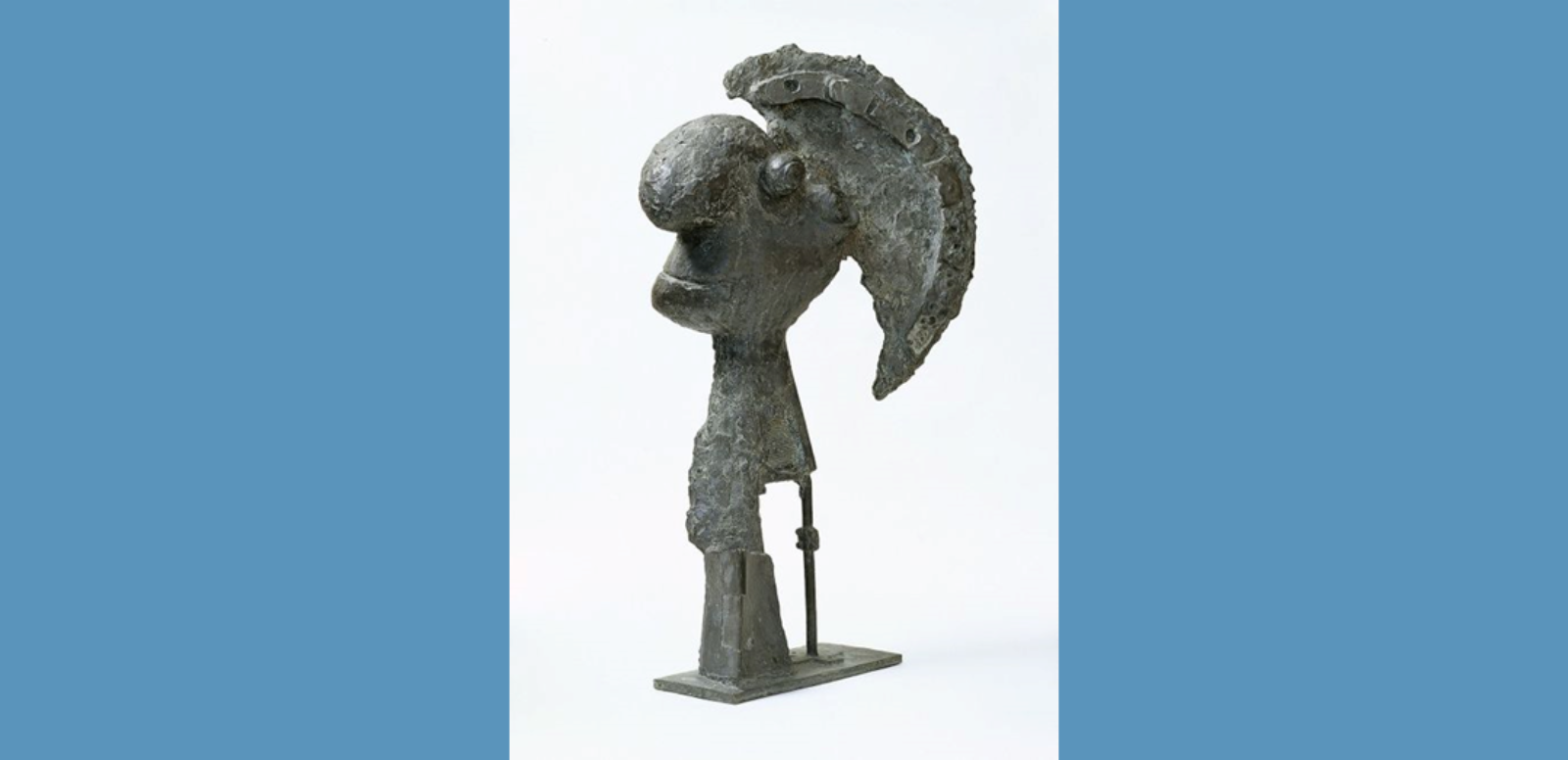
Fundación Almine y Bernard Ruiz-Picasso, Madrid. Préstamo temporal en el Museo Picasso Málaga. Obra cedida temporalmente a la exposición "Picasso escultor. Materia y cuerpo”
© Sucesión Picasso, VEGAP, Madrid, 2023
Monday to Sunday from 10 a.m. to 7 p.m.
Head with Helmet (1933) is a sculpture by Pablo Picasso that is surprisingly rich in symbolism and technique. This work has its origins in an illustration project for a translation of the Greek comedy Lysistrata, from which Picasso was inspired to create a series of drawings depicting the heroine and the warriors of the story. The work was conceived between December 1933 and February 1934 and, during this period, Picasso approached the representation of the figure of the Greek warrior with a very particular approach.
The sculpture presents a male head with a helmet, which at first glance may appear to be in a classical style. On closer inspection, however, it reveals features that break with the conventionality of the representation. The exaggeratedly deformed nose, the protruding, asymmetrical eyes and the laughing mouth suggest a visual irony.
The work combines various techniques and materials, which adds to the complexity of its structure. Picasso used elements of plaster modelling, assemblage and mark printing to create it. The eyes are modelled on tennis balls and the helmet is formed from a roll of bolts with the braiding of a barnyard wire. The head, of exaggerated proportions and mounted on a long neck, contains nails, a metal frame and a lever. This mixture of elements gives rise to a rich texture and visual contrasts, making Head with a Helmet (1933) a pioneering work in Picasso's sculptural repertoire.
Through this work, Picasso explores the relationship between the male figure and the symbolic representation of the warrior, linking it to elements of power. The artist plays with the juxtaposition of elements, the deformation of features and the combination of materials to convey his visual message.
Head with Helmet (1933) belongs to the Almine and Bernard Ruiz-Picasso Foundation and has been loaned for the exhibition Picasso the Sculptor. Matter and Body, which was presented at the Picasso Museum in Malaga on 8 May and 29 September, and at the Guggenheim Museum in Bilbao, where it will be on display until 14 January 2024.
Sources:
Museum Picasso Málaga: https://museopicassomalaga.org/coleccion/cabeza-con-casco

